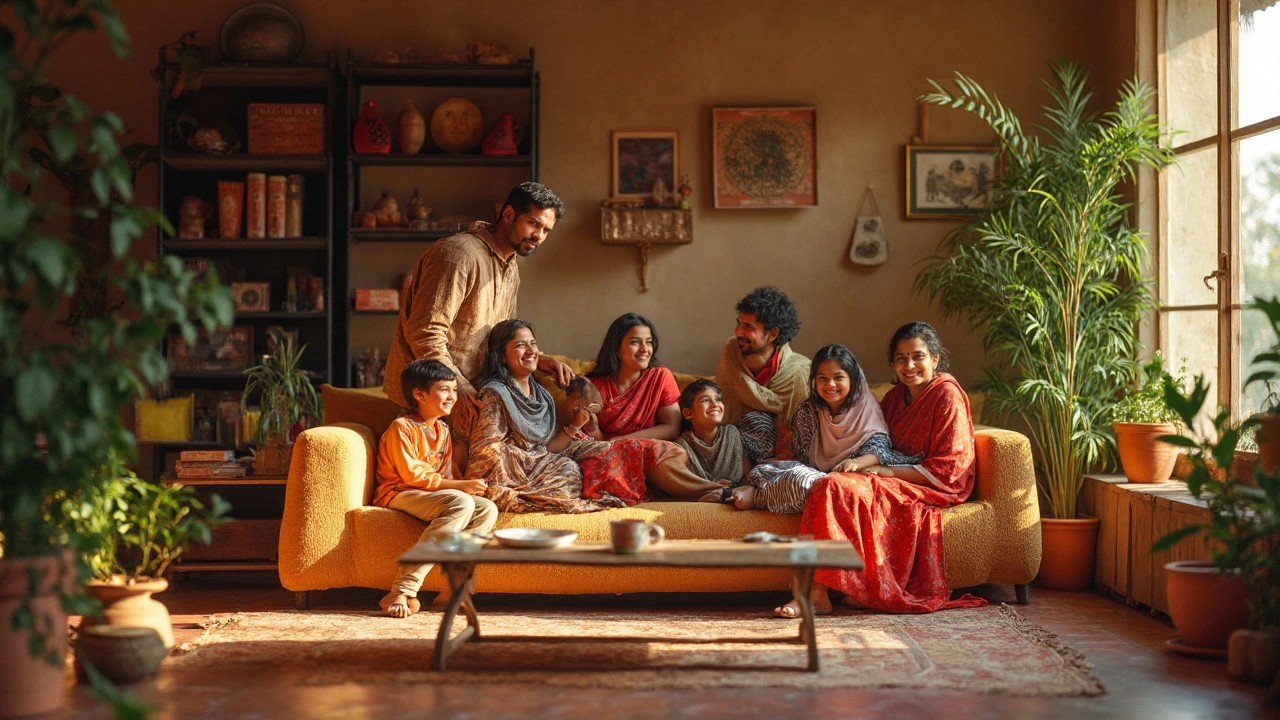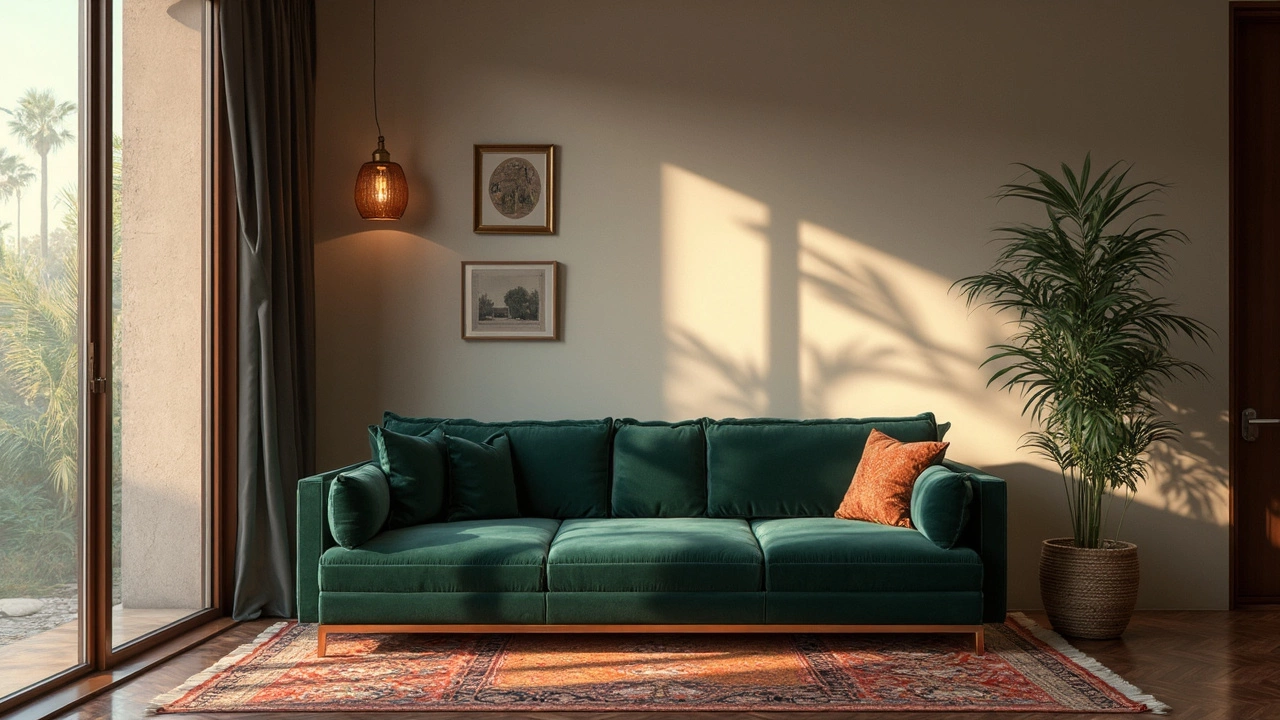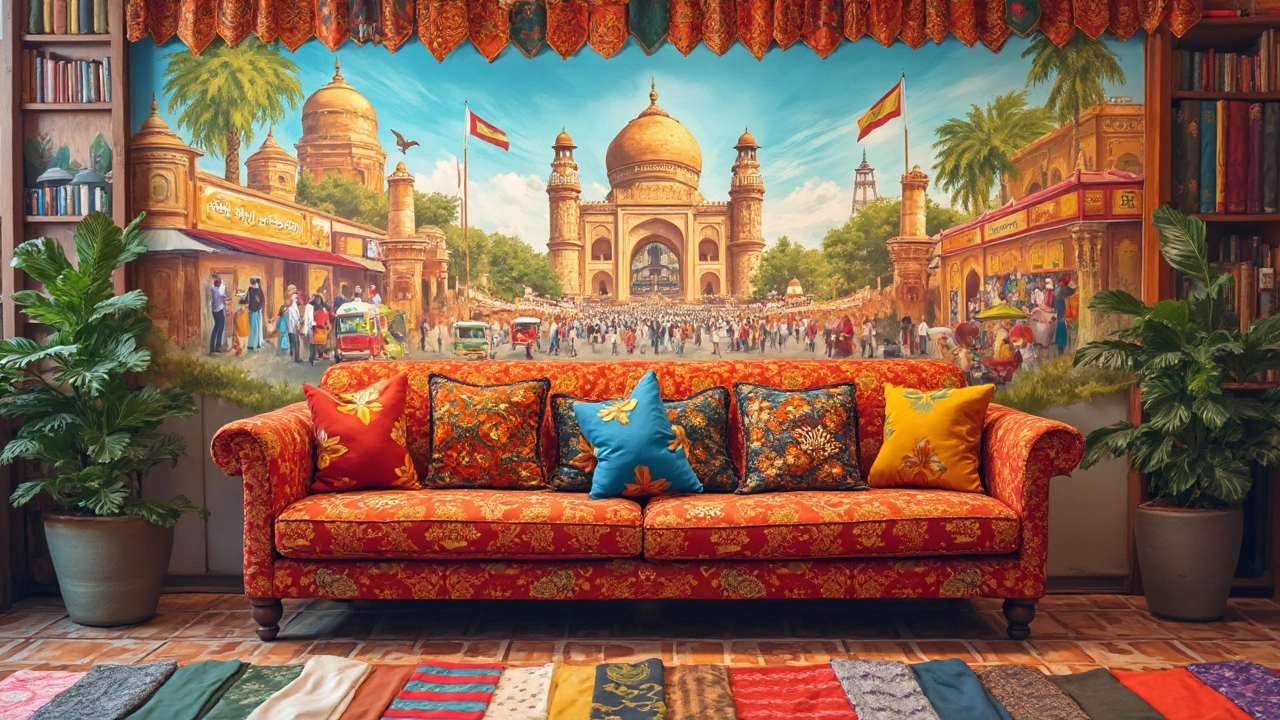Which Couch Fabric Lasts the Longest? Uncover the Best Options

Ever wonder why some couches age better than others? The secret often lies in the fabric. If you’ve ever battled with a couch that’s quickly worn out, you're not alone. Picking the right fabric can dramatically extend the life of your couch, saving you time and money down the line.
At the top of the durability list is leather. It's a classic choice, known for standing up to the wear and tear of daily life. While it may be on the pricier side, investing in a quality leather couch can mean fewer replacements.
The synthetic fabric game has also upped its ante. Fabrics like microfiber and polyester blends offer impressive durability without breaking the bank. They're resistant to stains and fading, which is perfect if you’ve got kids running around or pets who like to jump on the furniture.
- Understanding Fabric Durability
- Leather: The Classic Choice
- Synthetic Fabrics: Modern Wonders
- Natural Fabrics: Pros and Cons
- Maintenance Tips for Longevity
Understanding Fabric Durability
When it comes to picking out durable couch fabric, what should you be looking out for? Well, different materials have different strengths, and their ability to withstand wear and tear varies quite a lot.
Fiber Strength and Weave
First off, think about the fiber strength. Natural fibers like cotton or linen might look comfy but tend to wear out quicker than synthetics unless they're blended. Synthetic fibers such as polyester or nylon are often tougher and designed to last longer. Then there's the weave. Tightly woven fabrics are usually more durable. When shopping, check the thread count or fabric weight – higher numbers often mean longer-lasting materials.Resistance to Everyday Hazards
What about stains and fading? Well, that’s major if you’ve got a family or pets. Fabrics treated with a protective coating can resist stains better and stay brighter longer. Plus, darker or patterned fabrics often hide minor stains and dirt, making them look newer. Leather, as mentioned before, is a tough cookie, resisting both punctures and spills. But remember, it might not be ideal in hot climates, as it can get sticky.Case for Different Environments
Your home's environment plays a role too. If you live in a sunny locale, UV-resistant fabrics will help prevent fading. Suppose you throw lots of parties or have small children; a washable slipcover made from durable material can be a game-changer.Here's a quick breakdown of common fabrics and their lifespan to give you a clearer picture:
| Fabric Type | Estimated Lifespan (Years) |
|---|---|
| Leather | 10-15 |
| Microfiber | 7-10 |
| Cotton Blend | 5-8 |
| Wool Blend | 5-10 |
Navigating the couch fabric world doesn’t have to be a guessing game. By understanding these factors, you can make a choice that helps your couch fabric last longer, offering both comfort and style for years to come.
Leather: The Classic Choice
Leather has long been celebrated as a top-notch fabric for couch fabric, and there's a good reason for that. It's practically synonymous with durability. One of the key benefits of leather is its ability to resist abrasions. While other fabrics might wear down after continuous use, leather often looks even more charming with age, developing a unique patina.
Plus, cleaning a leather couch is a breeze compared to other materials. Spilled your coffee? A quick wipe usually does the trick, which is a lifesaver for those with a bustling household. Dust doesn't embed itself either, making it a low-maintenance dream.
Types of Leather
Not all leather is created equal, though. Here's a quick rundown of types you might encounter:
- Full-grain leather: The highest quality and most durable option. It’s thick and develops a beautiful patina over time, but it does command a premium price.
- Top-grain leather: Slightly more affordable, it’s thinner because it's sanded down for a smoother finish. Still durable but doesn’t age like full-grain.
- Bonded leather: Made from leftover leather scraps, it's cheaper but less durable. It's a good budget-friendly option if you're not holding on for the long haul.
Useful Stats
| Leather Type | Average Lifespan (Years) | Maintenance Level |
|---|---|---|
| Full-grain | 15+ | Low |
| Top-grain | 10-15 | Moderate |
| Bonded | 3-5 | High |
So if you're after longevity, leather couches are a solid bet. They can handle the rigors of everyday life while still providing a stylish and sophisticated look. Just remember, investing a little more in higher quality leather can mean your couch sticks around for years to come.

Synthetic Fabrics: Modern Wonders
Synthetic fabrics have come a long way in recent years, delivering durability and style without emptying your wallet. Ever heard of microfiber? It's a top choice for a durable sofa due to its tightly woven threads. These threads make it hard for dirt to get in and easy for you to clean up any mess that does occur.
Polyester, another popular option, often comes mixed with other fibers to boost longevity. It resists wrinkling and fading, plenty durable for sunny living rooms where sunlight can be harsh on furniture. Similarly, olefin, also known as polypropylene, shines in its ability to resist moisture and stains, making it a stellar choice for families with children or pets.
Benefits of Synthetic Fabrics
- Affordability: Generally, synthetic fabrics are less costly than natural materials, giving you the look you want without busting your budget.
- Ease of Cleaning: Most synthetic fabric couches require simple spot cleaning with soap and water.
- Versatility: With a wide range of colors and textures, finding the perfect match for your decor is a breeze.
It's not all about practical benefits. Synthetics are also innovating in the sustainability arena. More brands are offering recycled polyester options, meaning you can have a sustainable and stylish couch without compromising on looks or feel.
Here's a glance at the average lifespan of various couch fabric materials:
| Fabric Type | Average Lifespan |
|---|---|
| Microfiber | 5-7 years |
| Polyester Blends | 3-5 years |
| Olefin | 8-10 years |
Remember, whatever fabric you choose, it's all about maintenance. Regular cleaning and using your furniture wisely will help any type of couch fabric last longer.
Natural Fabrics: Pros and Cons
Natural fabrics for couch fabric options are loved for their eco-friendly factor and their classic appeal. Think linen, cotton, and wool. They bring a cozy, inviting touch to any room. But how do they stack up in longevity?
Pros of Natural Fabrics
- Eco-Friendly: If you're all about sustainability, natural fabrics are a great choice. They're renewable and biodegradable.
- Comfort: These materials are famous for their comfort. There's something about that soft, breathable texture that synthetic versions can't quite replicate.
- Breathability: Natural fibers allow better airflow, which can help in keeping things airy during those hot summer months.
Cons of Natural Fabrics
- Durability: While they look and feel great, natural fabrics can be less durable than synthetic counterparts. Cotton, for example, can fade in sunlight and absorb stains.
- Maintenance: Keeping them clean can be a bit more challenging. You'll need frequent vacuuming and perhaps even professional cleaning for tougher stains.
- Cost: Some natural fabrics, especially wool, can get expensive.
When considering a natural fabric for your sofa, keep in mind who will be using it. If you have a busy household or pets that love the couch as much as you do, you may need to weigh those pros and cons carefully. If you're still on the fence, consider a mix. Some manufacturers create blends that aim to bring the best of both worlds—combining natural and synthetic fibers to enhance strength and durability, while maintaining comfort.

Maintenance Tips for Longevity
Keeping your couch in top shape isn't rocket science, but it does take a little bit of care. Whether you’ve got leather or one of the durable synthetic fabrics, let's talk about how to keep it looking new.
Regular Cleaning
The first rule of thumb is regular cleaning. For leather, a monthly wipe down with a damp cloth can do wonders. Just make sure to dry it thoroughly to avoid water stains. For synthetic fabrics, vacuuming once a week keeps dirt and debris from settling in.
Dealing with Spills
Life happens, and spills are inevitable. For quick response, blot (don’t rub!) the spill immediately with a clean, dry cloth. Most synthetic fabrics are stain-resistant, which helps here, but quick action is key.
- Leather: Use a leather conditioner every 6-12 months.
- Synthetics: Opt for fabric protectors to enhance stain resistance.
Positioning and Protection
Avoid placing your couch in direct sunlight to prevent fading, especially for natural fabrics. If you have pets, consider using couch covers—they're a great line of defense against scratches and shedding.
Rotating Cushions
Lastly, don't forget to rotate your cushions. This simple habit ensures even wear and prolongs the life of your couch. It sounds like a small thing, but it makes a big difference.
Thanks to these easy maintenance steps, your couch can look fresh and last longer, regardless of the fabric you choose.